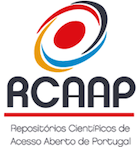Pediatric Tracheostomy: 10-year-experience in a Tertiary Center
DOI:
https://doi.org/10.34631/sporl.862Keywords:
Tracheostomy, Tracheotomy, Pediatric, childrenAbstract
Objective: to evaluate pediatric patients with tracheostomy in our tertiary center, regarding demographic data, indications, comorbidities, complications and rates of decannulation.
Material and Methods: Retrospective study of all patients under the age of 18 who underwent tracheostomy by the Otorhinolaryngology Service at Hospital Garcia de Orta, between January 2010 and December 2019.
Results: 15 patients were identified and studied. The procedure was elective in all cases. The most frequent indications for tracheostomy were laryngomalacia (33,3%) and prolonged mechanical ventilation (26,7%). No intraoperative complications were recorded. By the end of this study, 7 children (46,7%) were successfully decannulated.
Conclusions The statistical analysis of our study is in line with the data in the current literature.
The technical aspects and surgical indications for pediatric tracheostomy have specific characteristics, therefore highly differentiated treatment and a multidisciplinary approach is crucial for these patients.
Downloads
References
Watkinson JC, Clarke RW. Scott-Brown's Otorhinolaryngology Head & Neck Surgery 8th Ed. Vol 2. Boca Raton: CRC Press; 2018.
Licameli Greg R, Tunkel David E. editors. Pediatric Otorhinolaryngology: Diagnosis and Treatment. Stuttgart: Thieme; 2013.
Roberts J, Powell J, Begbie J, Siou G. et al. Pediatric tracheostomy: a large single-center experience. Laryngoscope. 2020 May;130(5):E375-E380. doi: 10.1002/lary.28160.
Carr MM, Poje CP, Kingston L, Kielma D. et al. Complications in pediatric tracheostomies. Laryngoscope. 2001 Nov;111(11 Pt 1):1925-8. doi: 10.1097/00005537-200111000-00010.
Durbin CG Jr. Early complications of tracheostomy. Respir Care. 2005 Apr;50(4):511-5.
Wetmore RF, Muntz HE, McGill TJ. Editors. Pediatric Otolaryngology: Principles and Practice Pathways. Stuttgart: Thieme; 2012.
Lewis CW, Carron JD, Perkins JA, Sie KCY. et al. Tracheostomy in pediatric patients: a national perspective. Arch Otolaryngol Head Neck Surg. 2003 May;129(5):523-9. doi: 10.1001/archotol.129.5.523.
Douglas CM, Poole-Cowley J, Morrisey S, Kubba H. et al. Paediatric tracheostomy – a 11 year experience at a Scottish paediatric tertriary referral centre. Int J Pediatr Otorhinolaryngol. 2015 Oct;79(10):1673-6. doi: 10.1016/j.ijporl.2015.07.022.
Gergin O, Adil EA, Kawai K, Watters K. et al. Indications of pediatric tracheostomy over the last 30 years: Has anything changed? Int J Pediatr Otorhinolaryngol. 2016 Aug;87:144-7. doi: 10.1016/j.ijporl.2016.06.018.
Parrilla C, Scarano E, Guidi ML, Galli J. et al. Current trends in paediatric tracheostomies. Int J Pediatr Otorhinolaryngol. 2007 Oct;71(10):1563-7. doi: 10.1016/j.ijporl.2007.06.009.
Corbett HJ, Mann KS, Mitra I, Jesudason EC. et al. Tracheostomy—10-year experience from a UK pediatric surgical center. J Pediatr Surg. 2007 Jul;42(7):1251-4. doi: 10.1016/j.jpedsurg.2007.02.017.
Pérez-Ruiz E, Caro P, Pérez-Frias J, Cols M. et al. Paediatric patients with a tracheostomy. Spanish multicentre epidemiological study. Eur Respir J. 2012 Dec;40(6):1502-7. doi: 10.1183/09031936.00164611.
Ruggiero FP, Carr MM. Infant tracheotomy: results of a survey regarding technique. Arch Otolaryngol Head Neck Surg. 2008 Mar;134(3):263-7. doi: 10.1001/archoto.2007.24.
Wetmore RF, Handler SD, Potsic WP. Pediatric tracheostomy. Experience during the past decade. Ann Otol Rhinol Laryngol. Nov-Dec 1982;91(6 Pt 1):628-32. doi: 10.1177/000348948209100623.
Donnelly MJ, Lacey PD, Maguire AJ. A twenty year (1971–1990) review of tracheostomies in a major paediatric hospital. Int J Pediatr Otorhinolaryngol. 1996 Mar;35(1):1-9. doi: 10.1016/0165-5876(95)01255-9.
Meier JD, Valentine KJ, Hagedorn C, Hartling CL. et al. Emergency department use among children with tracheostomies: avoidable visits. J Pediatr Rehabil Med. 2015;8(2):105-11. doi: 10.3233/PRM-150324.
Watters K, O’Neill M, Zhu H, Graham RJ. et al. Two-year mortality, complications, and healthcare use in children with Medicaid following tracheostomy. Laryngoscope. 2016 Nov;126(11):2611-2617. doi: 10.1002/lary.25972.
Kremer B, Botos-Kremer AI, Eckel HE, Schlöndorff G. Indications, complications, and surgical techniques for pediatric tracheostomies— an update. J Pediatr Surg. 2002 Nov;37(11):1556-62. doi: 10.1053/jpsu.2002.36184.
Berry JG, Graham DA, Graham RJ, Zhou J. et al. Predictors of clinical outcomes and hospital resource use of children after tracheotomy. Pediatrics. 2009 Aug;124(2):563-72. doi: 10.1542/peds.2008-3491.
Fry TL, Jones RO, Fischer ND, Pillsbury HC. Comparisons of tracheostomy incisions in a pediatric model. Ann Otol Rhinol Laryngol. Sep-Oct 1985;94(5 Pt 1):450-3. doi:10.1177/000348948509400506.
Clarke R. Pediatric Otolaryngology: Practical Clinical Management. Stuttgart: Thieme; 2017.
Downloads
Published
How to Cite
Issue
Section
License
Copyright (c) 2021 The authors retain copyright of this article.

This work is licensed under a Creative Commons Attribution-NonCommercial-NoDerivatives 4.0 International License.






